Budget 2019: 10 top takeaways from Nirmala Sitharaman's speech
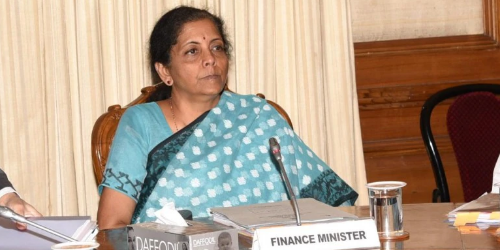
Union Finance Minister Nirmala Sitharaman presented her first Union Budget and also the first Budget of the Narendra Modi 2.0 government. Sitharaman began her first budget speech with a reference to New India "for which people voted the government in Lok Sabha election."
She said, "We have set the ball rolling for a New India" and sounded optimistic that the country will become a $5 trillion economy in a few years. Prime Minister Narendra Modi recently spoke about his government's target of making India a $5 trillion economy. Currently, it stands at $2.7 trillion.
Budget 2019-20: 10 points
Income Tax
Income tax slabs and rates have not been changed in the Budget 2019-20 presented by Nirmala Sitharaman but she gave some other incentives for tax payers. She enhanced interest deduction up to Rs 3.5 lakh for purchase of an affordable house.
The Budget proposes a surcharge on personal income tax for individuals earning more than Rs 2 crore a year. A three per cent surcharge on income between Rs 2 crore and Rs 5 crore, and seven per cent on income above Rs 5 crore.
She also promised to launch a scheme of faceless electronic assessment involving no human interface to be launched this year. There will be a central cell with a phone number that will be the single-point contact between the Income Tax Department and assessees.
The Budget also proposed interchangeability of Aadhaar and Permanent Account Number (PAN). Sitharaman said an income tax return filer can mention either Aadhaar or PAN in filing the ITR.
Corporate Tax
Sitharaman brought 99.3 per cent companies under 25 per cent corporate tax slab in her first Budget. This had been a long-pending demand - at least since 2009-10 - from the world of corporates and experts.
Sitharaman announced that corporate tax rate of 25 per cent - available to companies with annual turnover of up to Rs 250 crore - to all companies with turnover up to Rs 400 crore.
The finance minister said this move brings 99.3 per cent companies under this tax bracket. "Only 0.7 per cent companies will pay more corporate tax now," she said. This tax rate is 30 per cent.
Digital Push
The finance minister said the government intends to give greater push to digital payment. To achieve this objective, the Budget 2019 proposes a tax deduction at source (TDS) of 2 per cent on cash withdrawal exceeding Rs 1 crore.
This was proposed with the objective to discourage the practice of making business transaction in cash and push cashless economy.
No charges or MDR on specified digital mode of payments will be levied. These modes are to be compulsorily provided by large businesses, Sitharaman said in her budget speech.
5 Trillion Dollar Economy
To achieve the target of making Indian economy a $5 trillion economy, Sitharaman said the country needs to make structural reforms to achieve USD 5 trillion economy in the next few years.
Sitharaman said the Indian economy stood at $1.85 trillion in 2013-14 and today it stands at $2.7 trillion. It is within our capacity to reach $5 trillion in the next few years, she said.
However, Sitharaman did not give details of the structural reforms that the government intends to roll out to achieve that target.
Public-Private Partnership in Railways
This proposal is likely to stir political controversy. Sitharaman said railway infrastructure needs an investment of Rs 50 lakh crores by 2030 if it has to be effective. She said with the capital earning of the railways, this would take decades to develop railway infrastructure.
To bridge this time gap, the Budget proposed public-private partnership in railway infrastructure. She said PPP will be used to unleash faster development and delivery of passenger freight services.
Har Ghar Jal
Half of India is reeling under drinking water crisis. Monsoon is weak this year. During his election campaign, Modi had promised to create a separate ministry to deal with the issues related to drinking water, irrigation and fishery. The Jal Shakti ministry was created soon after the government was voted to power.
In this Budget, Sitharaman said the government will ensure "har ghar jal" (water to every household" by 2024. This will be done under Jal Jeevan Mission, which will focus on integrated demand and supply side management of water at the local level, including creation of local infrastructure for source sustainability like rainwater harvesting, groundwater recharge and management of household wastewater for reuse in agriculture.
FDI
Norms for foreign direct investment (FDI) has been relaxed in Budget 2019 for sectors such as aviation, media, insurance, and single brand retail with a view to attract more overseas investment.
Sitharaman said India's FDI inflows in 2018-19 grew by 6 per cent to $64.37 billion. She said 100 per cent FDI will be permitted for insurance intermediaries, and local sourcing norms will be eased for FDI in single brand retail sector.
Currently, 49 per cent foreign investment is allowed in the insurance sector including insurance broking, insurance companies, third party administrators, surveyors and loss assessors.
Disinvestment
Budget 2019 proposes to increase disinvestment target to Rs 1.05 lakh crore for the current financial year. It was Rs 90,000 crore in the interim budget presented in February.
Sitharaman said strategic disinvestment of select public sector undertakings will remain a priority area. Privatisation of Air India will be re-initiated.
She said the government is considering going below 51 per cent stake to an appropriate level on case to case basis for PSUs.
Rural Infrastructure
Sitharaman proposed steps to scale up infrastructure including augmenting 1.25 lakh km rural roads under the Pradhan Mantri Gram Sadak Yojana at a cost of Rs 80,250 crore and creating a national highways grid.
The finance minister said "We need to invest in infra, digital economy and job creation in small and medium enterprises...Schemes such as Bharatmala, Sagarmala and Udaan are bridging rural urban divide and improving our transport infrastructure."
Petrol, Diesel costlier
The government has hiked tax on petrol and diesel and raised import duty on gold. Sitharaman raised special additional excise duty and road cess on petrol and diesel by Re 1 per litre each. This came a day after the Economic Survey said the crude oil prices are likely to go down.
Customs duty on gold and precious metals was raised from 10 per cent to 12.5 per cent to mobilise resources. Basic customs duty was raised on an array of products including tiles, cashew kernels, vinyl flooring, auto parts, some synthetic rubber, digital and video recorder and CCTV camera.
An excise duty of Rs 5 per 1,000 will be imposed on cigarettes of length exceeding 65 mm. And, an excise duty of 0.5 per cent duty has been levied on chewing tobacco, zarda and tobacco extracts and essence.
- 0
- Leave a comment
India can have two tax rates, single slab not possible, says Arun Jaitley
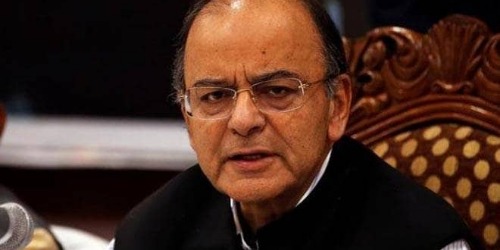
Former Finance Minister Arun Jaitley Monday said that India can have two slabs for the Goods and Services Tax (GST) but dismissed the possibility of a single rate.
"As revenue increases further, it will give an opportunity to policy makers to possibly merge the 12% and 18% slab into one rate, thus, effectively making the GST a two-rate tax," he said in his blog 'Two Years After GST', he said in his blog post titled 'Two years after GST'.
The former Finance Minister, however, dismissed a single GST slab adding that such an arrangement is possible only in "extremely affluent" countries where there are no poor people.
"In the pre-GST regime, the rich and the poor, on various commodities, paid the same tax. The multiple slab system not only checked inflation, but it also ensured that the Aam Aadmi products are not exorbitantly taxed. Illustratively, a hawai chappal and a Mercedes car cannot be taxed at the same rate. This is not to suggest that the rationalisation of slabs is not needed. That process is already on," he said.
He also said that as many as 20 states are already showing more than a 14% increase in their revenues and do not require the centre to compensate them for revenue loss arising out of GST implementation.
As the GST completes its two years, Jaitley took to social media to look back on the execution process of the fiscal regime which promised further simplification of the federal tax system in the country.
"Today, the Goods and Services Tax regime enters its third year. The monumental restructuring of one of the world's clumsiest indirect tax system was not an easy task. The challenges to implement the GST were compounded by some outlandish and exaggerated comments of the not so well-informed. It would, therefore, be only fair to look back the last two years and analyse the implementation and the impact/ consequences of the GST," said Jaitly in his Facebook post.
"Many warned us that it may not be politically safe to introduce the GST. In several countries, governments lost elections because of the GST. India had one of the smoothest transformation. Within the first few weeks of the implementation, the new system settled down. There were a few protests in Surat. The issues were resolved," he added.
Jaitley, who in May wrote to Prime Minister Narendra Modi expressing his unwillingness to be a Minister in the Modi 2.0 government due to health reasons, said that most items of consumer use have been brought in the 18 per cent, 12 per cent and even 5 per cent category.
The GST Council, chaired by Finance Minister and comprising state Finance Ministers, has reduced tax rates over the last two years which led to a revenue loss of more than Rs 90,000 crore, he said.
"Except for luxury and sin goods, the 28 per cent slab has almost been phased out. Zero and 5 per cent slabs will always remain. As revenue increases further, it will give an opportunity to policymakers to possibly merge the 12 per cent and 18 or cent slab into one rate, thus, effectively making the GST a two-rate tax," he said.
Observing that a sudden reduction of tax rates on all categories of goods can lead to a massive loss of revenue for the government leaving it without resources to spend, Jaitley said: "this exercise had to be done in a gradual manner as the revenues increased".
In the eight months of 2017-18 (July to March), the average revenue collected was Rs 89,700 crore per month. In the next year (2018-19), the monthly average has increased by about 10 per cent to Rs 97,100 crore.
"The fear of the states today is that for the first five years they get a guaranteed 14 per cent increase. The lurking doubt is as to what will happen after five years? Every state has been paid its share of tax as also from the compensation fund, if necessary. We have just completed two years of GST."
"Already after the second year, twenty states are independently showing more than a 14 per cent increase in their revenues and the compensation fund in their case is not necessary," Jaitley said.
GST, which subsumed 17 local taxes, was rolled out on July 1, 2017. It currently has four slabs -- 5, 12, 18 and 28 per cent. On top of the 28 per cent slab, a cess is levied on automobiles, luxury, demerit and sin goods.
Modi govt aims to deliver 1 crore houses 2 years before the 2022 deadline
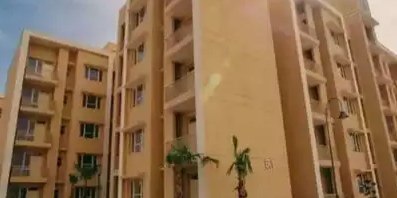
The Housing Ministry on Tuesday announced it would advance the deadline for delivering one crore houses under PM Awas Yojna (PMAY) in urban areas by almost a period of two years to 2020. Earlier, the central government had set the deadline for PMAY to 2022.
Union Housing Minister Hardeep Singh Puri said that he was confident that sanction for almost all required number of houses would be received by the first quarter of next year and the construction work would be completed by the end of the year, reported The Times of India.
Puri added that more than 81 lakh houses have been sanctioned so far with an investment of Rs 4.83 lakh crore which was out of the validated demand for one crore dwelling units. He asserted that more than 6.32 lakh families have availed interest subsidy under credit-linked subsidy scheme of PMAY.
"We have achieved the progress only by taking states on board unlike the UPA when projects were approved from the Centre. Real practice of Cooperative federalism has worked", said Puri.
Prime Minister Narendra Modi took to Twitter and wrote, "No stone will be left unturned to fulfil the dream of Housing for All, which will give wings to crores of aspirations". PM Modi further stated that his government is committed to improving urban infrastructure while citing that "PMAY (Urban), AMRUT and Smart Cities missions" were launched four years back with the objective of transforming urban landscape.
NPAs under PM Modi's Mudra scheme jumped 126% in FY19, shows RTI
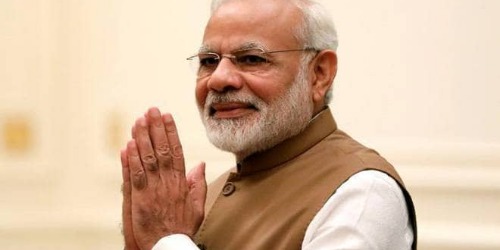
The Non-Performing Assets (NPAs) under Prime Minister Narendra Modi's flagship scheme Pradhan Mantri Mudra Yojana (PMMY) saw a jump of 126% in just one year. The NPAs of loans issued under the programme leapt Rs 9,204.14 in FY 19 from Rs 7,277.31 crore in March 2018 to Rs 16,481.45 crore in March 2019. This information was obtained as a response to an RTI filed by The Wire.
A total of 30.57 lakh accounts have been declared as NPAs under the Mudra scheme. Even though the value of NPAs is not very high as compared to the total loan value granted under the scheme, it is nevertheless increasing constantly.
More data from the RTI reveals that the loans to the tune of Rs 3.11 lakh crore in total were granted between April 1, 2018, and March 31, 2019, which means that the value of NPAs is 2.89% of the total value of loans.
Meanwhile, according to the official government website, the total amount of sanctioned loans increased 26.82% from Rs 2.53 lakh crore to Rs. 3.21 lakh crore in FY 19. The loan disbursal increased 26.53% from Rs 2.26 lakh crore to Rs 3.11 lakh crore in the same period. The total number of loans also saw a 24.39% jump from 4.8 crore on April 1, 2018, to 5.9 crore on March 31, 2019.
As per a report in IANS published on January 13, the Reserve Bank of India (RBI) had cautioned the Finance Ministry that Mudra scheme might become a major contributor to NPAs.
Under the RBI norms, an account is classified as a Non-Performing Asset (NPA) if it is not serviced for 90 days.
"In case of national banks, this deadline is 90 days, while the deadline is 120 days for NBFCs and MFIs. These rules apply to all types of loans, Mudra or otherwise," Harshit Agrawal, assistant manager of Mudra Ltd told the news website.
While the RTI response did give details concerning the total NPA amount, it did not reveal any information about the NPA account-holders such as their names, the total borrowed sum, interest rates etc. Mudra Ltd said that it does not have the required information regarding the same.
New industrial policy to be announced soon: President Kovind
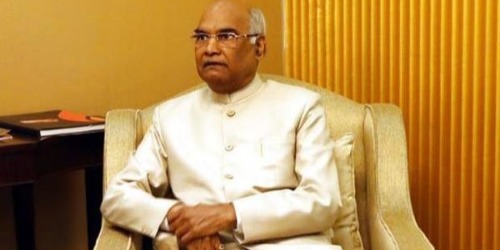
The government will soon announce a new industrial policy aimed at promoting growth of industries and creation of jobs, President Ram Nath Kovind said Thursday.
Addressing the joint sitting of both Houses of Parliament, the President said work is underway in full earnest to transform India into a global manufacturing hub.
"Keeping in view Industry 4.0, a new industrial policy will be announced shortly," he said.
The new policy will replace the industrial policy of 1991 which was prepared in the backdrop of balance of payment crisis. This will be the third industrial policy after the ones released in 1956 and 1991.
The proposed policy aims at promoting emerging sectors and modernising existing industries. It will also look to reduce regulatory hurdles and encourage adoption of frontier technologies such as robotics and artificial intelligence.
The Department for Promotion of Industry and Internal Trade (DPIIT), under the Commerce and Industry ministry, in August 2017 had floated a draft industrial policy with an aim to create jobs for the next two decades, promote foreign technology transfer and attract USD 100 billion FDI annually.
The department last year submitted a cabinet note on the policy.
Talking about strengthening start-up ecosystem in the country, Kovind said India has joined the league of countries with most number of start-ups in the world.
"To improve the start-up ecosystem, the government is simplifying rules. This campaign will be further expedited.
Our goal is to establish 50,000 start-ups in the country by 2024," he added.
Startup India is the flagship initiative of the government. Launched in January 2016, it intends to build a strong ecosystem for the growth of startup businesses, to drive sustainable economic growth and generate employment opportunities. It also provides tax and other incentives.
So far, as many as 19,280 startups have been recognised by the department.
To create a conducive environment for businesses in the country, Kovind said the government would work with states in further simplification of processes.
He said in the ease of doing business report, India has jumped 65 positions during the past five years, from a ranking of 142 in 2014 to 77 last year.
"Now our goal is to be among the top 50 countries of the world. In order to achieve this, process of simplification of rules will be further expedited in collaboration with states.
"Necessary amendments are also being brought in the Companies Law," he said, while noting that easy procedures and processes helps a country attract both domestic and foreign investments.
On MSMEs (micro, small and medium enterprises), he said to ensure entrepreneurs associated with the sector do not face any problem in accessing credit, the credit guarantee coverage is being enhanced to Rs one lakh crore.
MSMEs contribute around 45 per cent to India's exports, about 25 per cent to the GDP from service activities and over 33 per cent to manufacturing output of India.


